Archive for December, 2013
December 27th, 2013 by dave dorsey
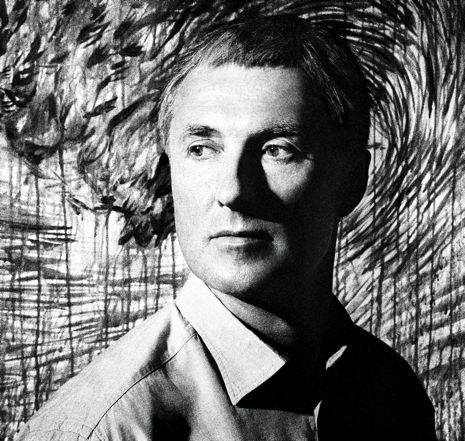
From a good piece in The New Yorker about the art market, and David Zwirner, the era’s emerging dealer-king:
“One of the reasons there’s so much talk about money is that it’s so much easier to talk about than the art,” Zwirner told me one day. You meet a lot of people in the art world who are exhausted and dismayed by the focus on money, and by its dominance. It distracts from the work, they say. It distorts curatorial instincts, critical appraisals, and young artists’ careers. It scares away civilians, who begin to lump art in with other symptoms of excess and dismiss it as another garish plaything of the rich. Of course, many of those who complain—dealers, artists, curators—are complicit. The culture industry, which supports them in one way or another, and which hardly existed a generation ago, subsists on all that money—mostly on the largesse and folly of wealthy art lovers, whether their motivations are lofty or base.
“Since the doldrums of the early nineties, the market for contemporary art, which has various definitions (work created after the Second World War, or during “our” lifetime, or post-1960, or post-1970), has rocketed up, year after year, flattening out briefly amid the financial crisis and global recession of 2008-09, before resuming its climb. Big annual returns have attracted more people to buying art, which has raised prices further. It is no coincidence that this steep rise, in recent decades, coincides with the increasing financialization of the world economy. The accumulation of greater wealth in the hands of a smaller percentage of the world’s population has created immense fortunes with a limitless capacity to pursue a limited supply of art work. The globalization of the art market—the interest in contemporary art among newly wealthy Asians, Latin Americans, Arabs, and Russians—has furnished it with scores of new buyers, and perhaps fresh supplies of greater fools. Once you have hundreds of millions of dollars, it’s hard to know where to put it all. Art is transportable, unregulated, glamorous, arcane, beautiful, difficult. It is easier to store than oil, more esoteric than diamonds, more durable than political influence. Its elusive valuation makes it conducive to extremely creative tax accounting.”
And:
“Dealers come and go, their names and enterprises soon forgotten. All that survives is the detritus of their influence and taste—what they sold and whom they sold it to. The biggest dealers are like Ice Age mega-glaciers, leaving behind vast moraines of art work they’d borne aloft and finally deposited in mansions and museums before melting away.”
December 25th, 2013 by dave dorsey
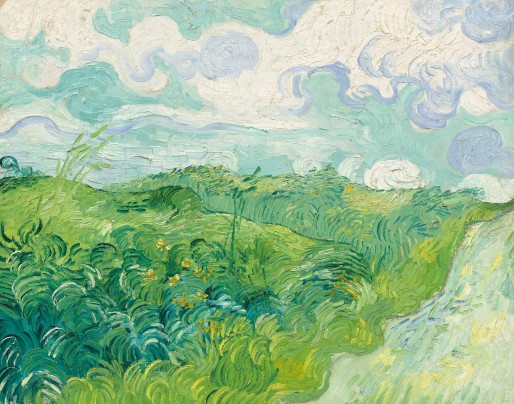
Green Wheat Fields, Auvers, 1890
I’d thought Wheat Field with Crows had that honor, but apparently this largely unseen painting might have been his goodbye. It’s as good as anything from that final year. Another reason to visit the National Gallery again.
Van Gogh scholars are likely to be thrilled that the work is once again in the public domain. The painting has not been displayed publicly since 1966. Mellon’s wife, Rachel Lambert Mellon, has held the rights to the painting since his death in 1999. This year, she relinquished the remainder of her estate, allowing the museum to display the work. Until recently, the painting hung over the fireplace in the Mellons’ Upperville, Va., home.
Washington Post
December 23rd, 2013 by dave dorsey
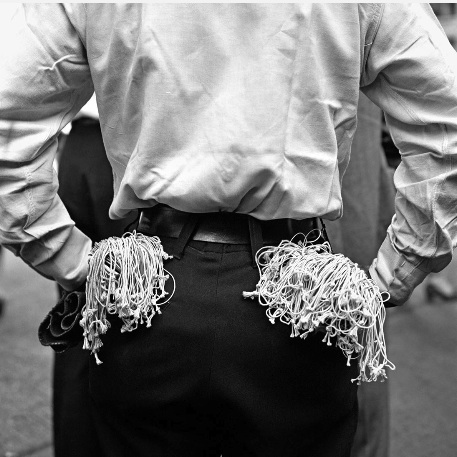
September, 1959, Vivian Maier
A semi-snarky, dismissive essay from The Atlantic about an incredibly gifted photographer suggests that her story, as an outsider–rather than the quality of the work–has captured the imagination of people who love Vivian Maier’s photography. Formal mastery combined with the timing and luck to capture a living, breathing moment, and a fascination and empathy that drove her to capture compelling images of other human beings, and quite a few of herself. That’s Vivian Maier. This is a critic who questions Maier’s rank as an artist but wrote not too long ago: “Selfies are Art.” So which is it? She did quite a few “selfies.” Maybe those are “high art,” which is a term that pops up in the quote below. (Clemente Greenberg called. He wants his vocabulary back.) The only time I’ve been able to tolerate the term “high art” was when it was the title of a movie by Lisa Cholodenko, which, come to think of it, was about a character based on Nan Goldin, whose celebrated photographs have the same kind of spontaneity and everydayness and low-ness, for that matter, as Maier’s, but with more shock value (back in the day, anyway.) Stick ’em in the scrapbook! Anybody who was there could have taken them, right? Which is more applicable to Goldin than Maier’s shots, which are more rigorous, in formal terms.
The film does not use the term “outsider artist,” but Maier does not appear to have had any formal training and didn’t show in galleries during her lifetime. In part this may have reflected her own individual preferences or difficulties; she was by many accounts a temperamental, private person, and seems to have struggled with mental illness late in life. In part, her distance from the high art world was probably because she was working-class. Many of her pictures are of the children who were in her care; they show kids at the beach climbing over rocks, children happy, children sad. If those sound like your typical family photos, well, they are.
–Noah Berlatsky
December 21st, 2013 by dave dorsey
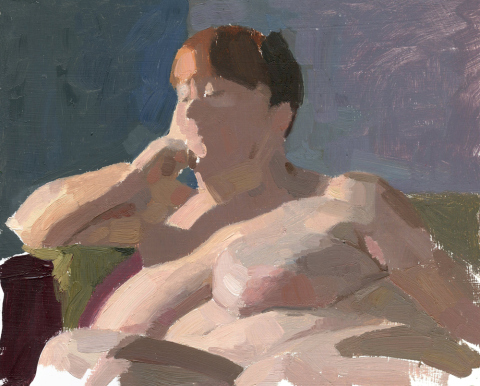 New figure paintings from Sarah F. Burnes.
New figure paintings from Sarah F. Burnes.
December 19th, 2013 by dave dorsey
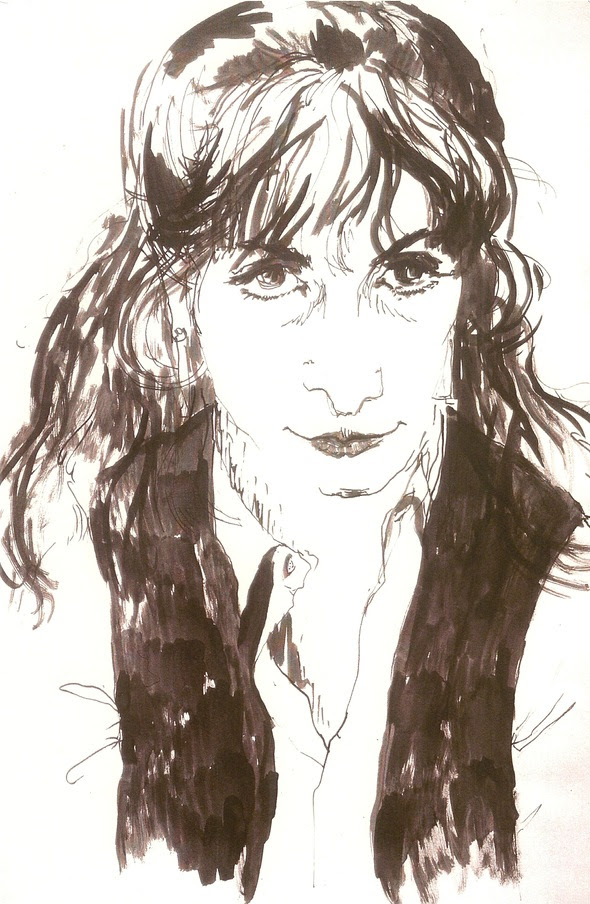
Girl in Black Vest, Susan Sills
Once Upon a Time, the holiday show for members and guests, is opening tonight at Viridian Artists. Above, one of the pieces in the show, a drawing that I’m willing to bet is Susan Sills herself, once upon a time. From our website:
Viridian Artists is pleased to present “Once Upon A Time” an exhibition of Viridian Artists & Friends, December 17th to January 11th, 2014 at 548 West 28thStreet, also accessible from 547 W 27th Street. There will be an opening reception Thursday December 19th, 6-8PM. In addition, Viridian is bringing back Ye Olde Art Shoppe of art cards, prints, books, and other artist-made gifts available for under $99, so that everyone has a chance to do some last minute holiday gift shopping.
Each year, in a spirit of holiday giving and sharing, Viridian Artists takes time to share the spirit of the holidays by inviting guest artists to show their creations along with us. Dress festively & come join us on Thursday, December 19th to celebrate and remember how things were “Once Upon A Time”.
Once upon a Time
there was a pay phone on every corner & you could make a call for a quarter
children were spanked when they disobeyed the teacher
business lunches were 2 martinis
we didn’t kiss ’til the third date
we could go to Europe on $5 a Day
we wore backpacks only when we went camping
we could have a delicious lunch for $5
the frame was not more important than the picture
women didn’t dream of becoming President
only men wore the pants in the family
we used to write each other letters in script & mail them at the post office…
we could have a cigarette with our drink
we did our grocery shopping on Saturday, etc, etc…
Janet Bohman, Renee Borkow, Henry Coupe, May DeViney, David Dorsey, Arthur Dworin, Bernice Faegenburg, Tazuko Fujii, Alan Gaynor, Wally Gilbert, Joshua Greenberg, Elizabeth Featherstone Hoff, Renee Kahn, Kathleen King, Valerii Klymchuk, Namiyo Kubo, Elvira Lantenhammer, Nancy Macina, Jeffrey Melzack, Matthias Merdan, Michael Miller, Stacey Clarfield Newman, Oi Sawa, Barbara K Schwartz, Susan Sills, Virginia Evans Smit, Angela Smith, Robert Smith, Sheila Smith, Deborah Sudran, Bob Tomlinson, Meredeth Turshen,
With Guest Artists: Adrienne Ankuda, Barrett Benton, Richard Brachman, Benjamin Briggs, Robert Cenendella, Ursula Clark, Lee Cordray, Gloria Cunnick, Abby DuBow, Phyllis Featherstone, Flashlight & Bill Rabinovitch, Celia Gilbert, Elizabeth Ginsberg, Brenda Hernandez, Jacqui Joseph, Mary Frances Judge, Jae Young Kim, Minjung Kim, Angela LaMonte, John Lloyd, Marcia Lloyd, Dee Dee Maguire, Bob Marvin, Robert Mielenhausen, Barbara Minsky, Darryl Moody, Eileen Mullan, Vernita N’Cognita, Sunanda Parikh, Shirley Pasternak, Lauren Purje, William Rodwell, Joseph J Roy, Leonard Rosenfeld, Stephen Salek, Jane Talcott, Daniel Victor, Vicky Wojcik
December 17th, 2013 by dave dorsey
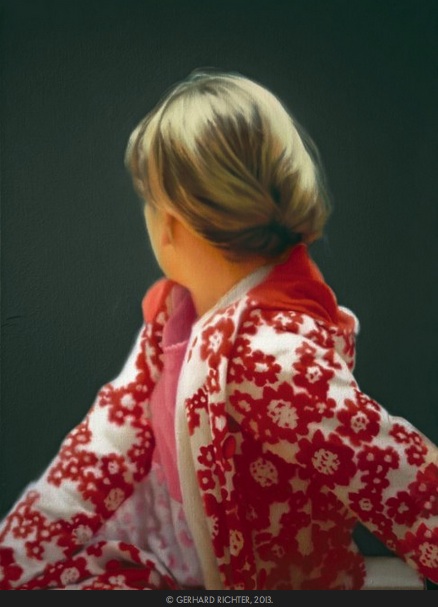
Betty, Gerhard Richter, 1988, oil on canvas
A poll among artists to identify who are the greatest living artists. Some, of course, voted for themselves. Vanity Fair suggests the artists hardest to pin down stylistically may be the most suited to the moment:
No doubt many respected artists who received few or no votes would have done better if the voters had been asked to name 10 rather than 6 artists. But establishing a cutoff was the point: it forced voters to define this moment’s priorities. The rather weak showing of artists who can be easily defined—as a “painter,” for example, or a “photographer”—is a defining part of the portrait. (Those artists would have done better in a larger sampling.) What, after all, would you call Nauman,Sherman, or Hammons? What is Weiwei? Or Kentridge? Are Baldessari and Ruscha only painters? Conceptual art doesn’t cover it. The phrase is a meaningless catchall. The preference for artists who are not tied to one genre or another, or who move among genres, reflects an impatience with customary boundaries and scales, perhaps because staying within the lines seems an insufficient response to today’s world. Floaters—and Richter and Johns, despite being painters, have a lot of “float” in their sensibilities—can more easily piece together a postmodern “I” that seems to fit the moment.
December 15th, 2013 by dave dorsey
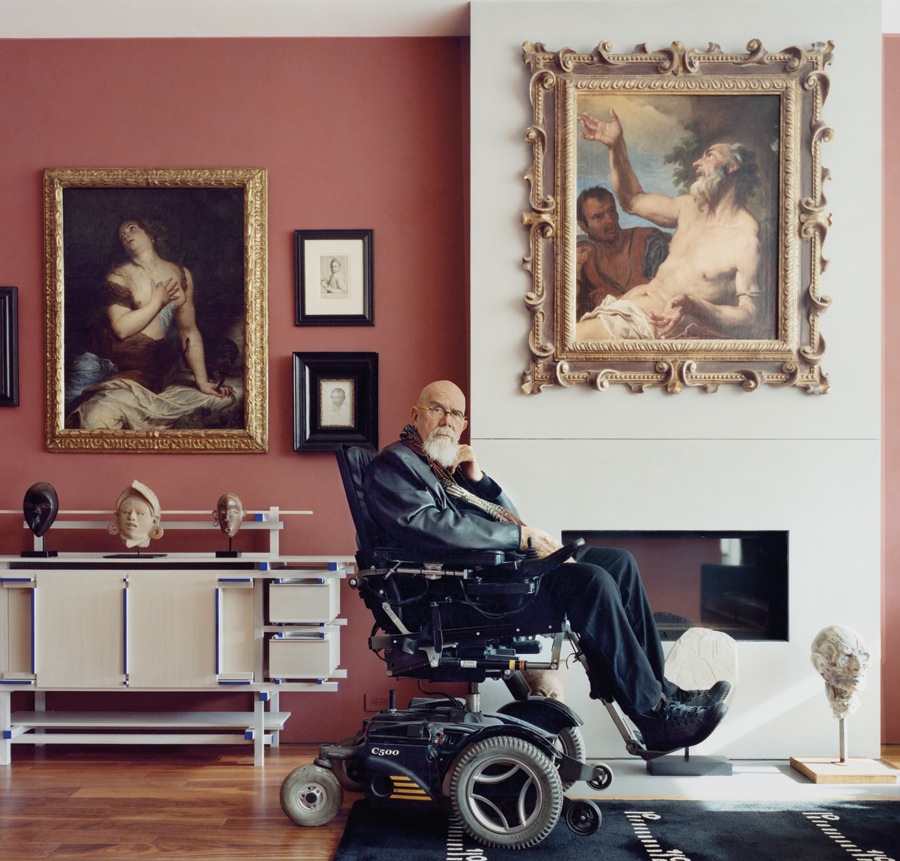
Chuck Close with his collection
From a NYTimes article about what famous artists collect. I want to ask Koons, if art is just about sex, what’s up with the word “transcendence”?
Jeff Koons
When Jeff Koons speaks about the “biological” subtext of his art, he’s alluding to the sexual references embedded within. (Think of the hoses and tanks of his vacuum cleaners, the crevices and shanks of his stainless steel balloon figures.) When Koons looks at the art he collects — old and modern masters including Picasso, Dalí and Courbet — he sees much the same thing.
The composition of a William-Adolphe Bouguereau nude that welcomes visitors to the Upper East Side townhouse he shares with his wife, Justine, and their six children is “vaginal,” he says, while a Manet painting of a boat displays “aspects of boat gender.” (To Koons, ships are metaphors for sexuality.) The Picasso portrait in his living room combines the faces of two women. “The whole thing is phallic.” In his bedroom, where nearly every painting — by Poussin, Magritte, Fragonard and more — is a celebration of desire, another Picasso depicting the artist making love is “about conquest, both artistic and sexual.”
If it seems as if he has a one-track mind, let it be said that the art in his possession affects his whole being. “I think art is about transcendence and consciousness, making connections to things in the world.”
Chuck Close
The living room of (Chuck Close’s) NoHo apartment doubles as a gallery for Dutch, Flemish and Italian old masters like van Dyck, Rembrandt, Titian and Tintoretto, as well as for African art.
A white marble bust of Hadrian, carved from life in the second century A.D., sits near a window, while a gilded Italian altarpiece, dated 1310, hangs over a Gerrit Rietveld cabinet. “When I studied Greek and Roman art,” Close says, “I didn’t know or care who the subjects were. Now I’m thinking, Hey, who’s Hadrian? Turns out he was a gay emperor. And a pacifist.”
Close, who is 73, . . . says, “I’m not acquisitive.” Yet on either side of an interior hallway are dozens of portraits, small drawings, photographs and paintings, many by artists Close has painted. They include Willem de Kooning, Eric Fischl, Cindy Sherman, Irving Penn and Alex Katz, as well as Jacob Lawrence, Diane Arbus and Man Ray. Most were trades, though a cut-paper collage by Ray Johnson was a purchase. One section of the work is blank, removed by the artist after Close requested a 20 percent discount. “Contemporary art is the most overpriced, overvalued stuff — thank God,” he says. “But old masters are the most powerful.”
December 11th, 2013 by dave dorsey
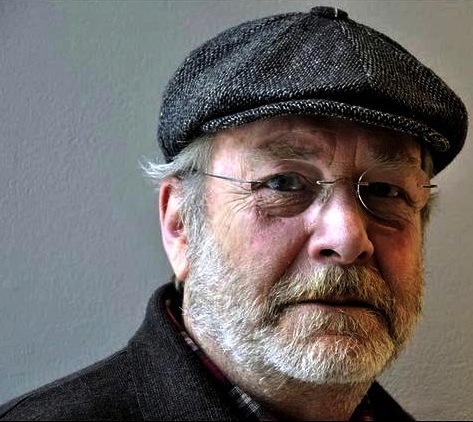
Martin Mull
AVC: By the way, did you really coin the expression “writing about music is like dancing about architecture,” as has been suggested on occasion?
Martin Mull: You know, I believe I had heard that as an apocryphal story, that “talking about art is like dancing about architecture.” Apparently, it had happened at a lecture at Pratt Institute, in New York.
–A.V. Club
Herewith, another little dance about architecture. In a previous post, I quoted a passage about the British philosopher Iris Murdoch from a book by another author, Matthew Crawford:
Iris Murdoch writes that to respond to the world justly, you first have to perceive it clearly, and this requires a kind of “unselfing.” “Anything which alters consciousness in the direction of unselfishness, objectivity and realism is to be connected with virtue.” “Virtue is the attempt to pierce the veil of selfish consciousness and join the world as it really is.” This attempt is never fully successful, because we are preoccupied with our own concerns. But getting outside her own head is the task the artist sets herself . . .
I’ve been thinking about it again, while writing recently about the way I paint and how diligently Tim Jenison worked to create a painting equal to Vermeer’s work. These lines of thought came together in the notion that for a representational artist, art is largely a matter of copying: mimesis. To make a charcoal line on paper come alive as a tiger or a gun or a flower is to submit to the ordeal of copying what’s already the case in the world. My post on Vermeer addressed how Vermeer copied what he saw as effectively as any painter who ever lived, but he also did more than copy, by ordering what he saw and undoubtedly altering it, in paint, to unify his vision. But copying was, by and large, the mission. To labor for long periods of time at the job of copying is the drudgery but also the joy of being a painter.
All of these thoughts returned, again, while I listened to MORE
December 11th, 2013 by dave dorsey
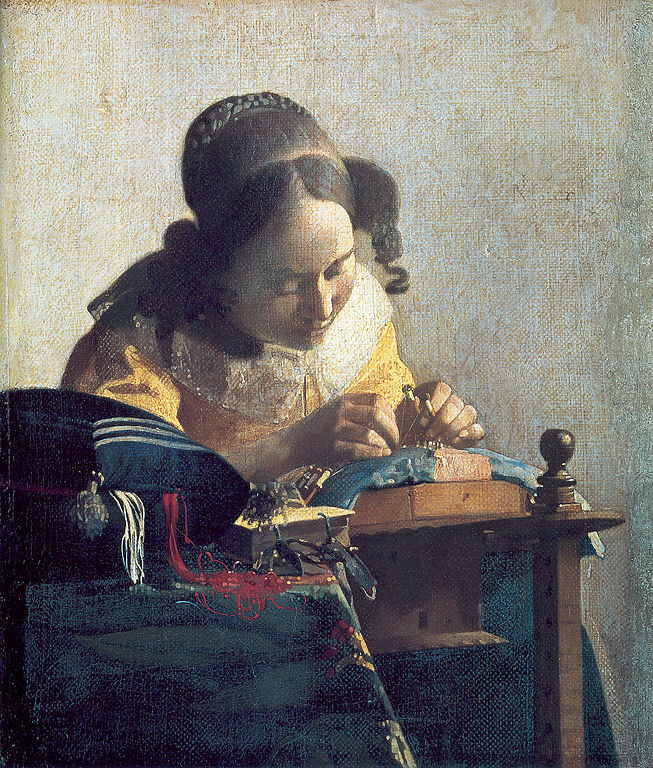
THE LACEMAKER
9 5/8 x 8 1/4 in.
This is astute: the reference to Aldous Huxley and the recognition that Vermeer was, like an abstractionist, obsessed with the quality of the paint on the surface, entirely apart form what it was meant to represent. This is the crux: “It was because for Vermeer his later pictures all have a second kind of subject matter: that is, the effects of light, shadow, colour and tone. All realist painters seek to capture these luminous attributes of appearances, of course; but for Vermeer they become subjects in themselves, as much as they are means to the representation of human faces or satin jackets or carpet-covered tables.” His slavish, devoted use of a camera obscura to copy what he saw enabled him to change the way he saw as he conveyed it with paint. As Steadman suggests: he separated seeing from recognizing. Therefore, everything looks new in his best paintings.
Herewith, from The Essential Vermeer, in relation to the documentary Tim’s Vermeer:
Philip Steadman’s meticulous investigation and lucid argumentation regarding Vermeer’s use of the camera obscura eventually brought almost all art historians onboard his not-easy to-digest hypothesis (i.e. Vermeer used the camera and traced with it too), no easy trick for an art history outsider.
Do you feel that Vermeer’s use of the camera obscura as described in your book necessitates a revision of the artist’s expressive intentions or of his place within Dutch seventeenth-century philosophic, scientific or cultural context?
Steadman: This is at once the most interesting of your questions, and the most difficult to answer. The changes to widely accepted views of Vermeer, necessitated by a recognition of his extensive use of the camera, are confined I believe just to certain aspects of his work, while others remain quite unaffected. The ostensible subject matter of Vermeer’s pictures from 1657 onwards does not depart very greatly from the 17th century Dutch genre tradition in which he worked. We read the pictures as variants of standard themes – scholars in their studies, the artist in his studio, women reading love letters, ‘merry companies’ – although with Vermeer there is often a tranquillity and melancholy, where say in Jan Steen there would be rumbustiousness and chaos. Vermeer is never obvious, and it can be difficult to gauge the exact psychological relationships between his sitters, as in pictures like ‘The Music Lesson’ or ‘The Concert’. His arrangements of figures, and the activities in which they engage, are nevertheless not so different from equivalent works by his contemporaries. So far as allegory and symbolism go, Vermeer again conforms to accepted meanings, albeit with a large element on occasion of ambiguity and elusiveness. The 2001 New York/ London exhibition ‘Vermeer and the Delft School’ sought to situate Vermeer within his local artistic milieu in exactly these kinds of terms.
For many visitors to that exhibition however, the curators’ central premise was undermined by the fact that, set alongside Pieter de Hooch, the Delft architectural painters, even Fabritius, Vermeer did not seem to be a member of any ‘school’. On the contrary, his pictures stood out by their strangeness and their radically different visual ‘feel’. This was not just because of Vermeer’s superior powers as a painter, I would suggest. It was because for Vermeer his later pictures all have a second kind of subject matter: that is, the effects of light, shadow, colour and tone. All realist painters seek to capture these luminous attributes of appearances, of course; but for Vermeer they become subjects in themselves, as much as they are means to the representation of human faces or satin jackets or carpet-covered tables. It is in the response to these optical phenomena that the wider scientific and cultural significance of Vermeer’s camera technique lies.
In my book I quoted Lawrence Gowing who says that “Vermeer is alone in putting [the camera obscura] to the service of style rather than the accumulation of facts.” For Vermeer, that is to say, the camera was not merely a tool for achieving correct perspective or for refining composition. It was both these things, certainly; but much more important, it was the key to a whole new way of seeing. The camera was, for Vermeer, an instrument through which to gain a new vision of the world at the scale of the everyday, just as the telescope and the microscope were instruments for gaining new views of the worlds of the very large and the very small.
Vermeer was a supremely intelligent painter, perhaps one should say an intellectual painter; but at the same time he had I believe an extraordinary capacity for switching between this intellectualised, rational eye, and what one might call a perfectly ‘idiotic’ eye, with which he was able to see luminous patches of hue and tone, quite independent of the real-world objects from which they emanated. As Gowing puts it, in this mode of seeing, “Vermeer seems almost not to care, or not even to know, what it is that he is painting. What do men call this wedge of light? A nose? A finger? What do we know of its shape? To Vermeer none of this matters, the conceptual world of names and knowledge is forgotten, nothing concerns him but what is visible, the tone, the wedge of light.” Aldous Huxley in his book The Doors of Perception describes the world seen under the influence of mescalin as being like a painting by Vermeer: “Things without pretensions, satisfied to be merely themselves, sufficient in their suchness, not acting a part, not trying, insanely, to go it alone…” The drug, as one might say, switches off the higher-level powers of conceptualisation, leaving the eye to see just light and colour – as the painter was able to do without the benefit of artificial stimulants.
I was recently much struck by a passage from the 18th century Scottish philosopher Thomas Reid, who speaks of the general habit of the human mind to move extremely rapidly, from the reception of stimuli in the eye, to mental interpretations of those stimuli in terms of known objects in the world. “The mind has acquired a confirmed and inveterate habit of inattention to [the luminous stimuli]; for they no sooner appear than quick as lightning the thing signified succeeds, and engrosses all our regard…” The only profession in life in which it is necessary, by training the eye and mind, to break this process apart – to separate seeing from recognising – Reid says, is painting. “The painter hath occasion for an abstraction, with regard to visible objects… and this is indeed the most difficult part of his art. For it is evident, that if he could fix in his imagination the visible appearance of objects, without confounding it with the things signified by that appearance, it would be as easy for him to paint from the life, and to give every figure its proper shading and relief, and its perspective proportions, as it is to paint from a copy.”
December 9th, 2013 by dave dorsey
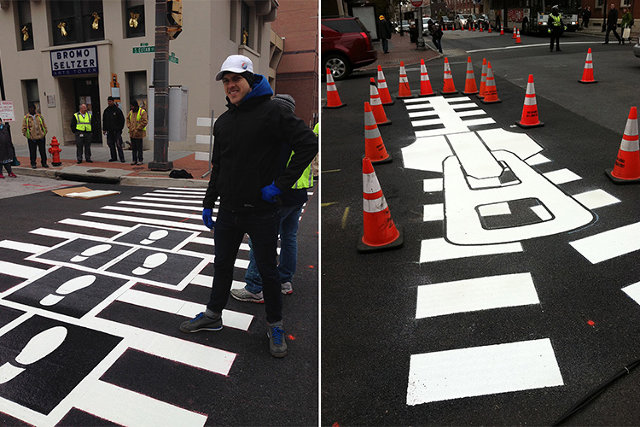
Walk this way
Artists design Baltimore’s crosswalks. Like it.
December 7th, 2013 by dave dorsey
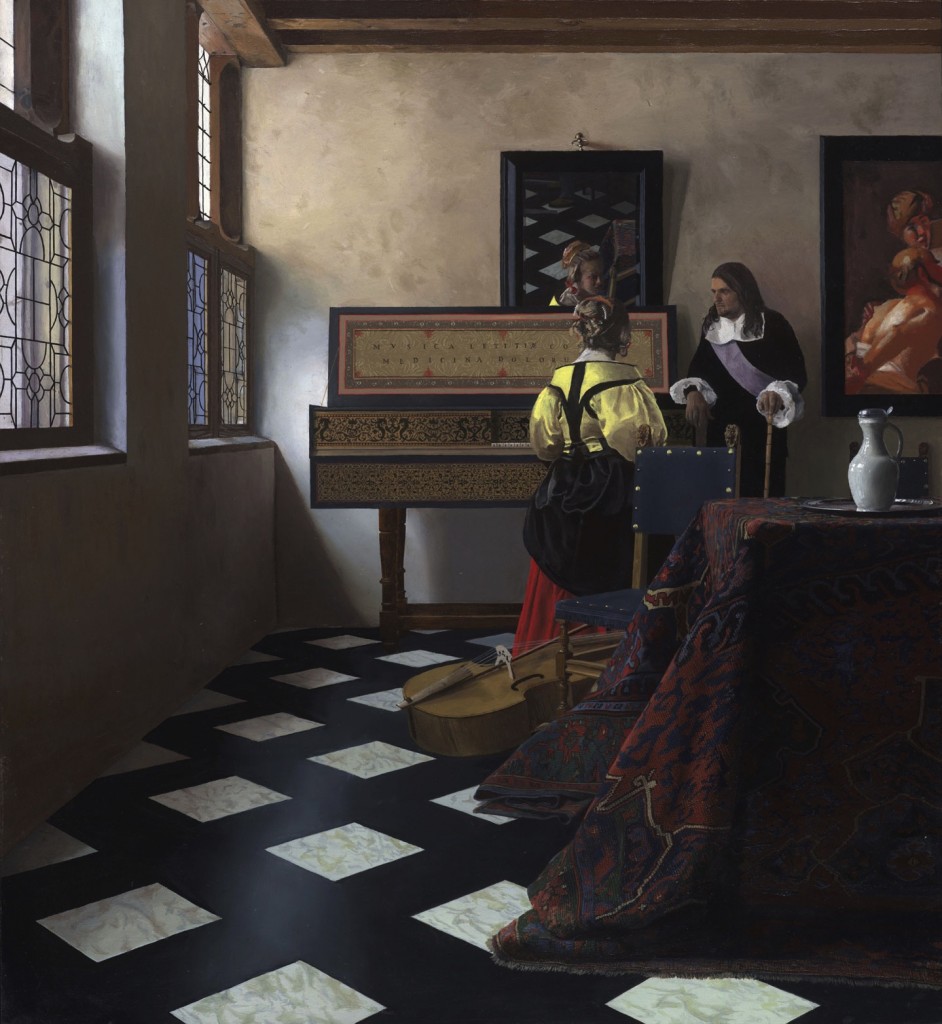
Tim Jenison’s marvelous attempt at Vermeer
Reader advisory: I’ve been slacking on this blog, because I haven’t had time to write. So I’m going to make up for it here and go on and on at lengths nobody but me will want to finish reading. If I actually finish, uh, writing it. So, herewith, another post on Vermeer. Ironically, seeing Girl with a Pearl Earring at the Frick, along with three other works from the greatest Dutch master, isn’t what made me want to write about Vermeer again. Nor did I get the urge to write about probably the greatest Western painter in history (who was ignored for a couple centuries) after hearing, by contrast, how so much lesser art is selling like gourmet hotcakes in Miami right now. The itch to write this actually began while I was finishing up a month of work on a recent painting for my solo show next May at Viridian Artists.
Two things occurred to me as I kept returning to the canvas every morning: I spend much of my time thinking my purpose is to match my paint to what I see on a computer screen off to the side of my canvas. I copy as dutifully as a monk with a quill and some parchment and a tome on comedy from Aristotle. Usually, a digital photograph I’ve taken serves as the guide. I look at the photograph. Then I look at the canvas. I try to make them match. Repeat, repeat, repeat. I do this for days, weeks, or months. With this last painting, I realized, as I always do when I pay attention, how much more I’m doing than simply copying what I see. I’m continuously altering all sorts of things: the exact hue of an object or area, the level of detail, and even the shape of certain patches of color or value. Occasionally I improve elements that aren’t there in the photograph, and, more often, remove things that are there. Often I make significant changes to color: intensifying a yellow or orange, compared to what’s in the photograph, MORE
December 5th, 2013 by dave dorsey
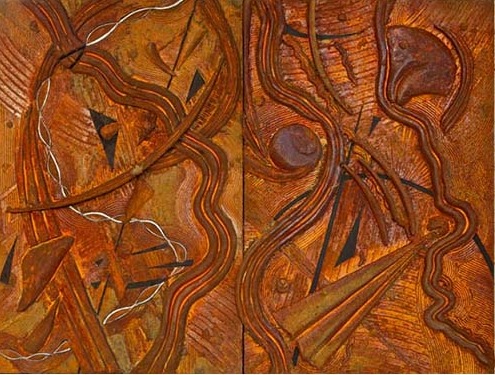
Ebb and Flow, Arthur Dworin
Arthur Dworin’s current constructions on view at Viridian are an exploration, in three dimensions, of forms that have occupied him for many years in his paintings. The organic and geometric shapes that populate his colorful work in the recent past are raised off the surface now and coated with an iron-rich medium that he then rusts to produce a more uniform brown that ranges from sienna to orange. Like Kandinsky, Dworin’s improvisations with form and shape are meant to resonate with his own spiritual explorations, in his case yoga. As he puts it, he hopes that, “The spirit in these works will act as a key to awaken what is already deep within the observer and anew with each viewing, bring a greater awareness of our inner and outer universe.” One of his collectors, Peter Selz, former curator of painting and sculpture for MoMA, has said of his paintings, “Abstract as they are, they bring a new sense of visual order to organic forms of nature.”
After the Viridian board meeting a week ago, I had a chance to ask Dworin a few questions about his work.
How do you build up the surface exactly?
There’s something called Magic Sculpt which is a safe, two-part putty and it hardens like a rock . You can carve it.
What do you use for a support?
Masonite, with one-by-two poplar. The surface is gesso-ed and then there are areas taped off before I put in the texture with Golden molding paste and Golden matte gel. The blocks are pumice and then there are areas where I put the paint on and shred urethane foam into it to get the texture. Finally, I spread on a high-iron content coating.
Which rusts.
Yes, I call these Swords to Ploughshares because it looks like MORE
December 3rd, 2013 by dave dorsey

Art is what happens when you’re making other plans for money.
“This talk of “a subject they love” brings us to the real crisis, which is both economic and cultural (or even moral). The point of work should not be just to provide the material goods we need to survive. Since work typically takes the largest part of our time, it should also be an important part of what gives our life meaning. Our economic system works well for those who find meaning in economic competition and the material rewards it brings. To a lesser but still significant extent, our system provides meaningful work in service professions (like health and social work) for those fulfilled by helping people in great need. But for those with humanistic and artistic life interests, our economic system has almost nothing to offer.
Or rather, it has a great deal to offer but only for a privileged elite (the cultural parallel to our economic upper class) who have had the ability and luck to reach the highest levels of humanistic achievement. If you have (in Pierre Bourdieu’s useful term) the “cultural capital” to gain a tenured professorship at a university, play regularly in a major symphony orchestra or write mega best sellers, you can earn an excellent living doing what you love. Short of that, you must pursue your passion on the side.”
—Gary Gutting, NYTimes












